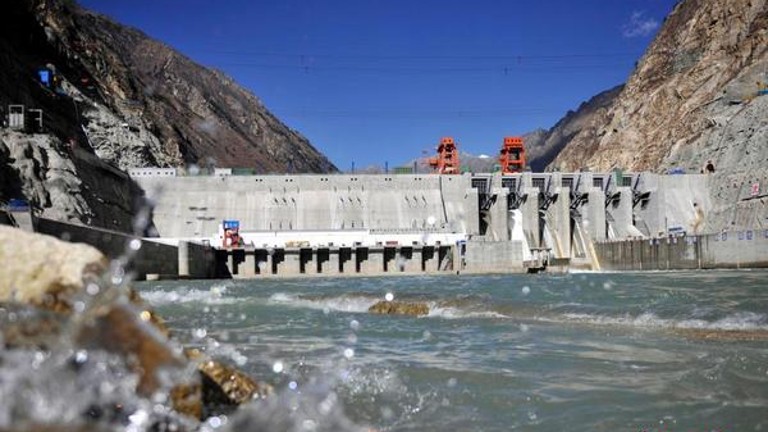
(TibetanReview.net, Oct15, 2015) – China said Oct 13 that the largest hydroelectric power dam it had built so far over the Yarlung Tsanpo river in occupied Tibet had become fully operational on Oct 12 with all its six units beginning to generate power. The highly controversial Zam Hydropower Station is built in Gyaca (Tibetan: Gyatsa) Country of Shannan (Lhokha) Prefecture, Tibet Autonomous Region. China had previously denied that the dam was ever being built until satellite pictures revealed the construction to be nearly complete.
China then sought to allay India’s concerns by saying the dam would not affect or interfere with the flow of the river. But the Fear in India remains that the dam is a potential Chinese hydrological weapon for causing mischief, like the border intrusions, and in times of conflict.
Built by the Wuhan-based China Gezhouba Group, the 9.6 billion yuan (about $1.5 billion) project will produce 2.5 billion kilowatt-hours of electricity each year, reported China’s official Xinhua news agency Oct 13.
“It will alleviate the electricity shortage in central Tibet and empower the development of the electricity-strapped region. It is also an important energy base in central Tibet,” the report quoted the company as saying.
The project, located 140 kilometers from Tibet’s capital Lhasa, is owned and operated by the state-run China Huaneng group, which is one of China’s five largest power conglomerates.
Downstream India, where the river is called the Brahmaputra, fears, despite China’s assurances, that the dam will be used to disrupt water supplies. The dam also raises concerns in India over China’s ability to release water in times of conflict which could pose serious risk of flooding, said a businessinsider.in report Oct 13.
India’s Inter-Ministerial Expert Group (IMEG) on the Brahmaputra had said in 2013 that three dams were being built on the upper reaches of the river and called for further monitoring considering their impact on the flow of waters to the lower reaches. It had added that the Jiexu, Zangmu and Jiacha were all within 25 kms of each other and 550 kms from the Indian border.
The report said India also feared that if the waters are diverted, projects on the Brahmaputra, particularly the Upper Siang and Lower Suhansri projects in Arunachal Pradesh, may get affected.


